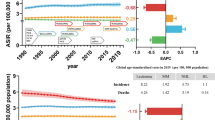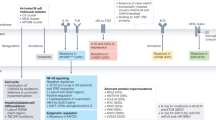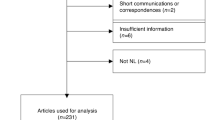Abstract
Primary non-Hodgkin lymphoma of the brain is rare, representing only 1% of all non-Hodgkin lymphomas (NHLs), but its incidence has been increasing rapidly in south-east England since 1985. Among 17,322 cases of NHL registered during the 18 year period 1973-90, there were 210 cases of primary cerebral NHL, of which 179 (86%) were diagnosed in the last third of this period, 1985-90. This increase in cerebral lymphoma is not adequately explained by improvements in the precision of diagnosis or by changes in disease coding or cancer registration practice. While there has also been a rapid increase in Kaposi sarcoma, neither immunosuppression acquired through HIV infection nor the overall trend in non-Hodgkin lymphoma can satisfactorily explain the recent increase in cerebral lymphoma, which affects all ages and both sexes similarly. Other possible causes for a true increase in cerebral lymphoma should be sought.
This is a preview of subscription content, access via your institution
Access options
Subscribe to this journal
Receive 24 print issues and online access
$259.00 per year
only $10.79 per issue
Buy this article
- Purchase on Springer Link
- Instant access to full article PDF
Prices may be subject to local taxes which are calculated during checkout
Similar content being viewed by others
Author information
Authors and Affiliations
Rights and permissions
About this article
Cite this article
Lutz, JM., Coleman, M. Trends in primary cerebral lymphoma. Br J Cancer 70, 716–718 (1994). https://doi.org/10.1038/bjc.1994.381
Issue Date:
DOI: https://doi.org/10.1038/bjc.1994.381
This article is cited by
-
Incidence and survival of primary central nervous system lymphoma (PCNSL): results from the Girona cancer registry (1994–2013)
Clinical and Translational Oncology (2018)
-
Primary CNS lymphoma in immunocompetent patients from 1989 to 2001: a retrospective analysis of 164 cases uniformly diagnosed by stereotactic biopsy
Acta Neurochirurgica (2006)
-
Intracerebral human lymphoma - an experimental model
Pathology & Oncology Research (1996)



